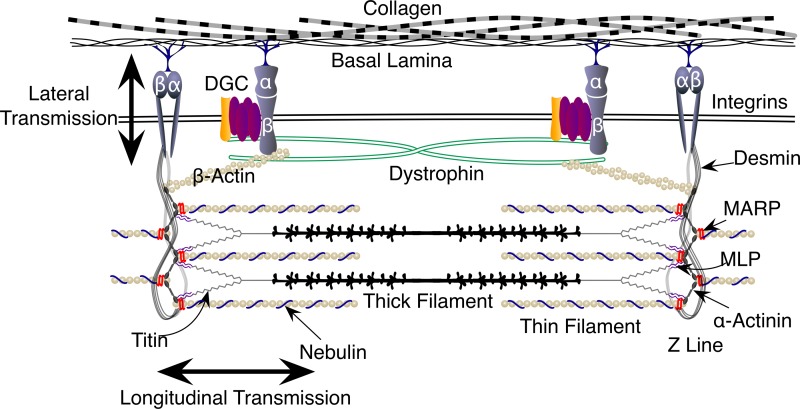Fig. 3.
Schematic diagram of the various cytoskeleton proteins involved in lateral and longitudinal force transfer. The dystrophin-associated glycoprotein and integrin complexes are key components in lateral force transmission, enabling skeletal muscle to accommodate shear loads and protect the muscle from contraction-induced injury. Titin, nebulin, the MARP (muscle ankryin repeat proteins) family, and muscle LIM protein (MLP) are involved in longitudinal force transfer and are important in the rate of force development in the muscle. Desmin and α-actinin link the two modes of force transmission and therefore play a key role in both processes.

